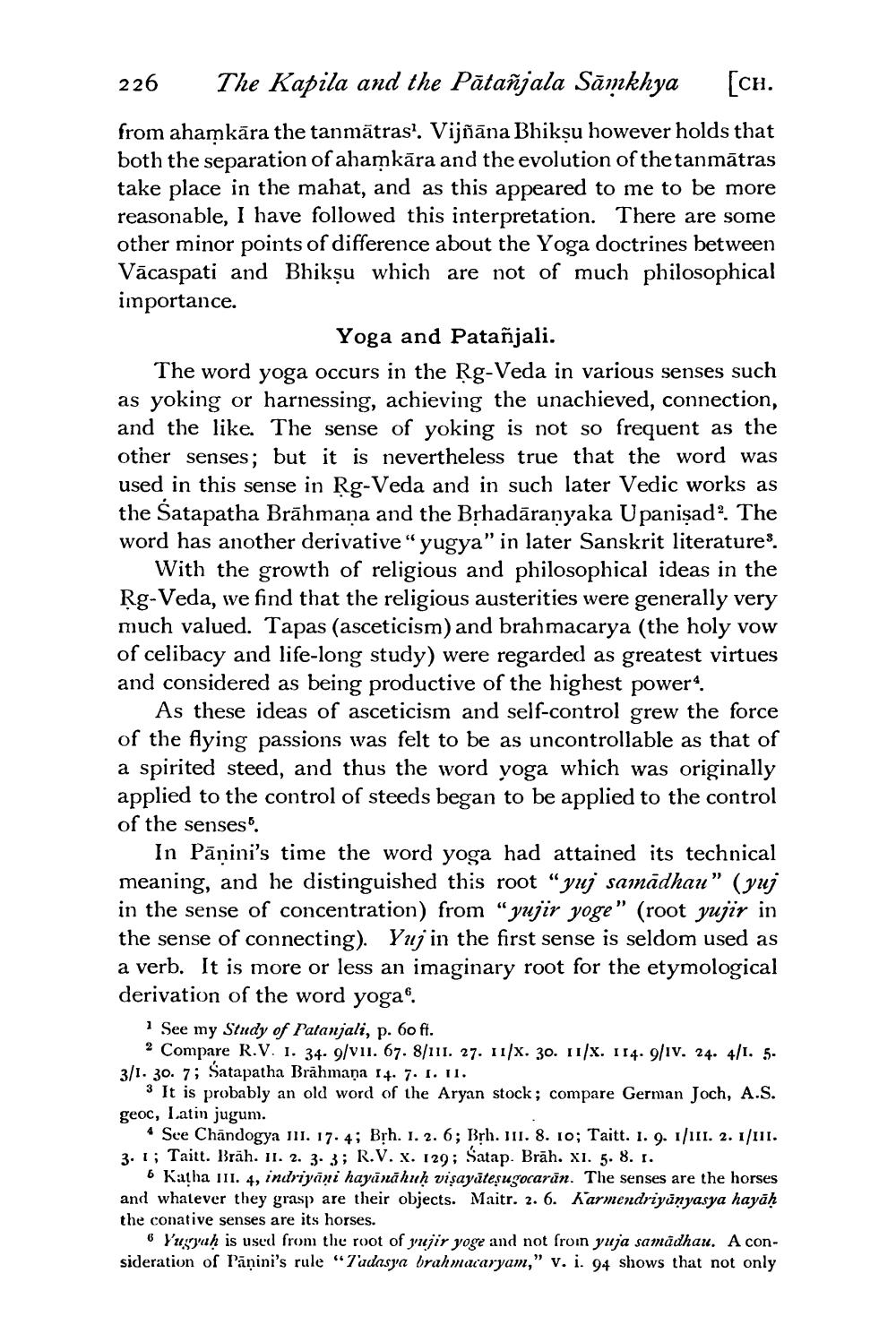________________
226 The Kapila and the Pātañjala Sāņkhya [ch. from ahamkāra the tanmätras?. Vijñāna Bhikṣu however holds that both the separation of ahamkāra and the evolution of thetanmātras take place in the mahat, and as this appeared to me to be more reasonable, I have followed this interpretation. There are some other minor points of difference about the Yoga doctrines between Vācaspati and Bhikṣu which are not of much philosophical importance.
Yoga and Patañjali. The word yoga occurs in the Rg-Veda in various senses such as yoking or harnessing, achieving the unachieved, connection, and the like. The sense of yoking is not so frequent as the other senses; but it is nevertheless true that the word was used in this sense in Rg-Veda and in such later Vedic works as the Satapatha Brāhmana and the Brhadāranyaka Upanisad? The word has another derivative" yugya" in later Sanskrit literatures
With the growth of religious and philosophical ideas in the Rg-Veda, we find that the religious austerities were generally very much valued. Tapas (asceticism) and brahmacarya (the holy vow of celibacy and life-long study) were regarded as greatest virtues and considered as being productive of the highest power4.
As these ideas of asceticism and self-control grew the force of the flying passions was felt to be as uncontrollable as that of a spirited steed, and thus the word yoga which was originally applied to the control of steeds began to be applied to the control of the senses.
In Pāṇini's time the word yoga had attained its technical meaning, and he distinguished this root "yuj samādhau" (yuj in the sense of concentration) from "yujir yoge" (root yujir in the sense of connecting). Yuj in the first sense is seldom used as a verb. It is more or less an imaginary root for the etymological derivation of the word yoga.
1 See my Study of Patanjali, p. 60 ft.
2 Compare R.V. 1. 34. 9/v11. 67. 8/11. 27. 11/x. 30. 11/x. 114. 9/10. 24. 4/1. 5. 3/1. 30. 7; Satapatha Brāhmaṇa 14. 7. 1. 11.
3 It is probably an old word of the Aryan stock; compare German Joch, A.S. geoc, Latin jugum.
* See Chāndogya III. 17. 4; Bịh. 1. 2. 6; Brh. JII. 8. 10; Taitt. 1. 9. 1/111. 2. 1/111. 3. 1; Taitt. Brah. II. 2. 3. 3; R.V. X. 129; Satap. Brāh. XI. 5. 8. 1.
6 Katha III. 4, indriyāni hayānāhuḥ visayāteşugocarān. The senses are the horses and whatever they grasp are their objects. Maitr. 2. 6. Karmendriyanyasya hayāḥ the conative senses are its horses.
6 Yugpah is used from the root of yujir yoge and not froin yuja samadhau. A consideration of Panini's rule “Tadasya brahmacaryam," v. i. 94 shows that not only




